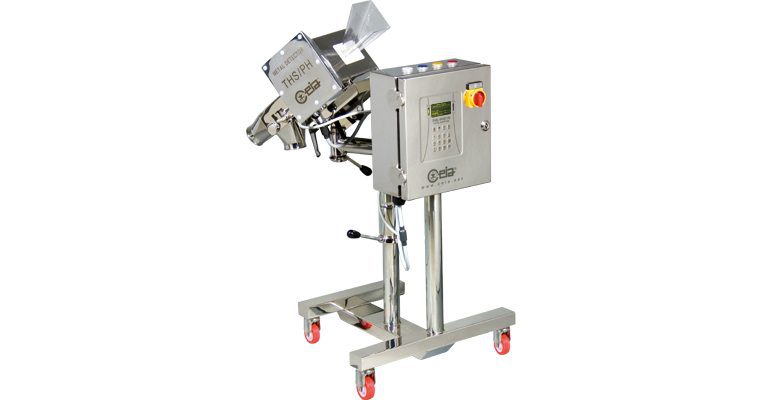The Pharmaceutical industry like any other industrial production process is subject to metal contamination. Generally this comes from the following sources:
- Contamination in raw materials caused by tanks, pipelines and other delivery methods.
- The plant and machinery in the production facility itself either through normal operation or by contamination through maintenance works being conducted in the factory.
- Production staff and others with access to the production area.
- Environmental contamination caused by the water, air and other supplies into the production process.
The correct selection and implementation of pharmaceutical metal detector equipment is one of the key elements in identifying and removing ferrous, non-ferrous and stainless steel contaminants from the finished product and ensuring the regulatory compliance of your process.
With a diverse range of powders, tablets, liquids and gels, the pharmaceutical industry presents a wide range of detection challenges. This is further compounded by the widespread use of metal foils in many packaging products.
Typical Pharmaceutical Metal Detector Applications
There has been widespread use of detectors placed at the output of tablet presses for many years and this remains one of the most effective points to divert and remove a contaminated product.
More recently detectors are also used at the output of dedusters where explosion protection due to the dusty environment may also be a requirement.
Detectors are also used widely on bottling lines either directly before the capping process or at the true “end of line” once any foil sealing issues for the bottle have been addressed.
Key selection Issues for the Pharmaceutical Metal Detector
- Sensitivity – the most obvious criteria is sensitivity, what minimum particle size must be detected?
- Environment – alongside sensitivity you must consider if the operating environment may affect the unit, e.g. is there a lot of vibration or other disturbances that need to be addressed.
- Explosion risk – what is the zone rating of the production area?
- Cleaning – how easily can the unit be accessed for cleaning and how easy it it to clean?
- Product changes – does the system impact the finished product itself in any way?
- Rejects – how are rejects to be dealt with and operational personnel informed?
- Network – how does the detector integrate into your overall factory automation and quality control systems?
- Validation – is the device correctly documented for your validation systems?
This list gives an outline of the many elements that must be considered when selecting a suitable device.
CEIA has a long history of supplying pharmaceutical metal detector systems and as the UK Distributor, MDS’s technical sales team are available to help you in the planning and implementation of your pharmaceutical metal detector system. Please give us a call.

